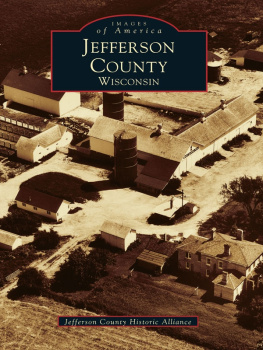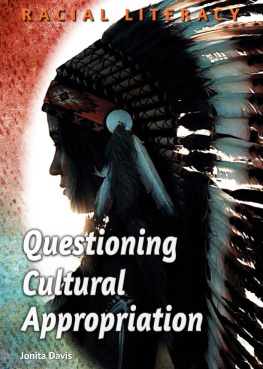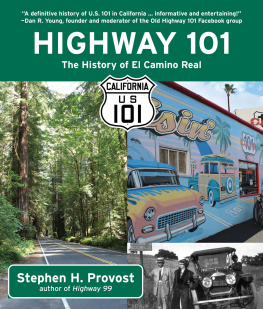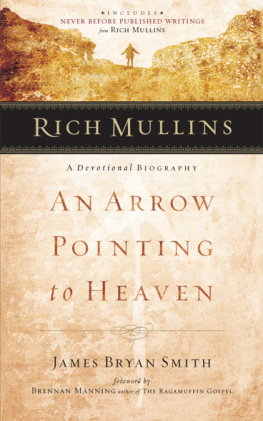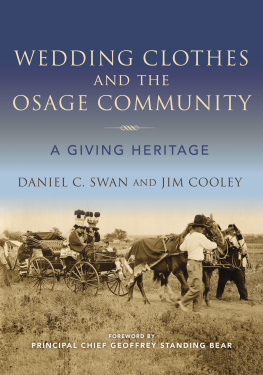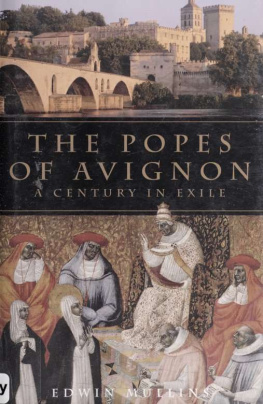Published by The History Press
Charleston, SC
www.historypress.net
Copyright 2016 by Jonita Mullins
All rights reserved
Front cover, top: This tree-lined boulevard took travelers along the Jefferson Highway through the heart of Muskogee, once the unofficial capital of Indian Territory. Glenn E. Smith collection.
First published 2016
e-book edition 2016
ISBN 978.1.43965.888.8
Library of Congress Control Number: 2016947529
print edition ISBN 978.1.46713.633.4
Notice: The information in this book is true and complete to the best of our knowledge. It is offered without guarantee on the part of the author or The History Press. The author and The History Press disclaim all liability in connection with the use of this book.
All rights reserved. No part of this book may be reproduced or transmitted in any form whatsoever without prior written permission from the publisher except in the case of brief quotations embodied in critical articles and reviews.
CONTENTS
FOREWORD
The Jefferson Highway was an important asset to the new state of Oklahoma. The Jefferson Highway Association was formed in New Orleans, and a large group of businessmen from Oklahoma made the trip to attend that important meeting.
Oklahoma became the forty-sixth state in November 1907, and eight years later, in November 1915, a group of Good Road enthusiasts made a bid to obtain an International Highway for Oklahoma.
When the first organizational meeting of the Jefferson Highway Association was held in New Orleans on November 1516, 1915, it expected to attract about fifty delegates, but over six times that number attended. In fact, more than fifty delegates showed up from the new state of Oklahoma alone. This first meeting showed how much rivalry there was between the states, as all of them wanted the Jefferson Highway to run through their cities.
The Muskogee Times-Democrat newspaper dated November 6, 1915, contained the following statement about the Jefferson Highway:
Believing an auto roadwhich in time will be a cement thoroughfare permanent enough to move armies overwill be worth more to Muskogee than another railroad, the delegates will join a special train leaving Parsons, Kansas with about 100 Kansans aboard, here the evening of November 12. Vinita, Dr. Bagby said, will send four delegatesother towns in eastern Oklahoma will send from one to a half-dozen, and Muskogee, with over 40,000 population, ought to send 40 men if they can be found willing to neglect their personal business long enough to go down and help out vote Missouri and Arkansas.
D.N. Fink of Muskogee became the leader of the Oklahoma delegation and, along with other representatives, won the vote to route the highway through Texas to Durant, Oklahoma, and then north through McAlester, Muskogee and Vinita to the Kansas and Missouri state lines. Mr. Fink was popular with all delegates and was elected vice-president at this same meeting.
This historic road through Oklahoma, today known as Highway 69, has a long history of travel by many people. Jonita Mullins has recorded the progression of this long-ago Native American path to the busy modern highway it is today.
GLENN E. SMITH
Muskogee, Oklahoma
President, Jefferson Highway Association, 20142016
INTRODUCTION
In the distant mists of time, the place we know as Oklahoma was a wilderness teeming with a vast array of flora and fauna. As many as eleven distinct eco-regions of the surrounding states seep into this one geographical spot, making it an inviting habitat for hundreds of species of plants and animals.
Its central location on the North American continent also made Oklahoma a crossroads even before human habitation. With the passage of time, the tread of thousands of feet and the turn of thousands of wheels created the first true roads passing over and through a beautiful region of the American West.
Those trails of yesterday have become the superhighways of today, carrying travelers along the same routes our ancestors followed. We travel for the same reasonsto explore, hunt, trade, visit and mourn just as we have always done. We follow the same paths, sometimes without even realizing who has traveled this way before us.
One such modern highway crossing Oklahoma is Route 69, also known as the Jefferson Highway. As a paved highway, it began in 1915, but as a much-traveled road, it stretches back for hundreds and perhaps even thousands of years. The earliest written references to it called it the Osage Trace.
But even before the Osages traveled over this road, it was likely used by earlier people who inhabited the region. And before that, it may well have been the pathway of both woodland and prairie creatures, letting their instincts lead them to the best grazing lands, a salt source, a watering hole or a place to pounce on unsuspecting prey.
As historian Grant Foreman once observed of this ancient road, the engineers of today could not calculate a better route than those instincts of both human and beast that traveled this way before us. From trail to road to railroad to highway, this old road is still the best way to cross through Oklahoma. A journey down the Jefferson Highway today recalls some of Oklahomas most important history and celebrates some of our most interesting places and people.
ANCIENT TRAILS
THE BUFFALO TRAIL
The ancient trails crossing the area throbbed with the hoof beats of vast herds of bison, elk and deer. In southern Oklahoma, on the Jefferson Highway, the town of Caddo celebrates the fact that it sits on an old buffalo trail.
The seasonal migration of this giant of the prairie was keenly important to the health of the ecosystem. The trails and wallows they carved into the land remained even after their numbers were decimated. The bison provided the first paths for hunters to follow.
The migratory trail of the buffalo was beaten hard, and the ground was eaten clean of tree seedlings and scrubby growth, leaving a healthy prairie. The wallows were formed when a more than 1,900-pound bison would take a dust bath. These impressions in the landscape became useful catch basins for rain in the hot summers and provided watering holes for other prairie creatures.
Great bison once ruled the prairie in massive numbers and crossed Oklahoma during their annual migration across the plains. Oklahoma Historical Society.
So it is not unreasonable to claim that the bedrock beginning of the Jefferson Highway in Oklahoma was the work of the great bison. An animal so much associated with the American West, the buffalo and its trails across the plains started us on the road we travel today.
EARLY TRAILS OF THE FIRST PEOPLE
The area of Oklahoma traversed by the Jefferson Highway was the hunting grounds of a very early people known as the Calf Creeks, who left their spear points behind as evidence of the hunt. One such point was found in an ancient bison skull in the Arkansas River, which the Jefferson crosses at Muskogee. The Calf Creek people were so named because the first spear point associated with them was found in Calf Creek Cave in Searcy County, Arkansas.






